-

新人教版高中英语选修2Unit 4 Reading for writing教学设计
假定你是英国的Jack,打算来中国旅行,请你给你的中国笔友李华写一封信,要点如下:1.你的旅行计划:北京→泰山→杭州;2.征求建议并询问他是否愿意充当你的导游。注意:1.词数80左右(开头和结尾已给出,不计入总词数);2.可以适当增加细节,以使行文连贯。参考词汇:故宫 the Forbidden City;泰山 Mount TaiDear Li Hua,I'm glad to tell you that 'm going to visit China.First,I am planning to visit Beijing,the capitalof China,where I am looking forward to enjoying the Great Wall,the Forbidden City and somebeautiful parks.Then I intend to go to visit Mount Tai in Shandong Province.I've heard that it is one ofthe most famous mountains in China and I can't wait to enjoy the amazing sunrise there.After that,I amalso going to Hangzhou.It is said that it is a beautiful modern city with breathtaking natural sights,among which the West Lake is a well- known tourist attraction.What do you think of my travel plan? Will you act as my guide? Hope to hear from you soon.

新人教版高中英语选修2Unit 4 Using langauge-Listening教学设计
The theme of the listening section is " talking about scenery and culture along a journey."The part is designed to further lead the students to understand Canadian natural geography and social environment, and integrated into the cultural contrast by mentioning the long train journey from Beijing to Moscow routes. On this basis, the part activates students related travel experience, lets the student serial dialogue, guides the student to explore further the pleasure and meaning of the long journey, and Chinese and foreign cultural comparison.The part also provides a framework for the continuation of the dialogue, which is designed to provide a framework for students to successfully complete their oral expressions, and to incorporate an important trading strategy to end the dialogue naturally.1. Help students to understand and master some common English idioms in the context, and experience the expression effect of English idioms.2. Guide the students to understand the identity of different people in the listening context, and finish the dialogue according to their own experience.3. Instruct the students to use appropriate language to express surprise and curiosity about space and place in the dialogue, and master the oral strategy of ending the dialogue naturally.1. Instruct students to grasp the key information and important details of the dialogue.2. Instruct students to conduct a similar talk on the relevant topic.

新人教版高中英语选修2Unit 5 Learning about Language教学设计
The purpose of this section of vocabulary exercises is to consolidate the key words in the first part of the reading text, let the students write the words according to the English definition, and focus on the detection of the meaning and spelling of the new words. The teaching design includes use English definition to explain words, which is conducive to improving students' interest in vocabulary learning, cultivating their sense of English language and thinking in English, and making students willing to use this method to better grasp the meaning of words, expand their vocabulary, and improve their ability of vocabulary application. Besides, the design offers more context including sentences and short passage for students to practice words flexibly.1. Guide students to understand and consolidate the meaning and usage of the vocabulary in the context, 2. Guide the students to use the unit topic vocabulary in a richer context3. Let the students sort out and accumulate the accumulated vocabulary, establishes the semantic connection between the vocabulary,4. Enable students to understand and master the vocabulary more effectivelyGuiding the Ss to use unit topic words and the sentence patterns in a richer context.Step1: Read the passage about chemical burns and fill in the blanks with the correct forms of the words in the box.

新人教版高中英语选修2Unit 5 Reading and thinking教学设计
The theme of this activity is to learn the first aid knowledge of burns. Burns is common in life, but there are some misunderstandings in manual treatment. This activity provides students with correct first aid methods, so as not to take them for granted in an emergency. This section guides students to analyze the causes of scald and help students avoid such things. From the perspective of text structure and collaborative features, the text is expository. Expository, with explanation as the main way of expression, transmits knowledge and information to readers by analyzing concepts and elaborating examples. This text arranges the information in logical order, clearly presents three parts of the content through the subtitle, accurately describes the causes, types, characteristics and first aid measures of burns, and some paragraphs use topic sentences to summarize the main idea, and the level is very clear.1. Guide students to understand the causes, types, characteristics and first aid methods of burns, through reading2. Enhance students’ ability to deal withburnss and their awareness of burns prevention3. Enable students to improve the ability to judge the types of texts accurately and to master the characteristics and writing techniques of expository texts.Guide students to understand the causes, types, characteristics and first aid methods of burns, through readingStep1: Lead in by discussing the related topic:1. What first-aid techniques do you know of ?CPR; mouth to mouth artificial respiration; the Heimlich Manoeuvre

新人教版高中英语选修2Unit 5 Using langauge-Listening教学设计
The theme of this section is to learn how to make emergency calls. Students should learn how to make emergency calls not only in China, but also in foreign countries in English, so that they can be prepared for future situations outside the home.The emergency telephone number is a vital hotline, which should be the most clear, rapid and effective communication with the acute operator.This section helps students to understand the emergency calls in some countries and the precautions for making emergency calls. Through the study of this section, students can accumulate common expressions and sentence patterns in this context. 1.Help students accumulate emergency telephone numbers in different countries and learn more about first aid2.Guide the students to understand the contents and instructions of the telephone, grasp the characteristics of the emergency telephone and the requirements of the emergency telephone.3.Guide students to understand the first aid instructions of the operators.4.Enable Ss to make simulated emergency calls with their partners in the language they have learned1. Instruct students to grasp the key information and important details of the dialogue.2. Instruct students to conduct a similar talk on the relevant topic.Step1:Look and discuss:Match the pictures below to the medical emergencies, and then discuss the questions in groups.
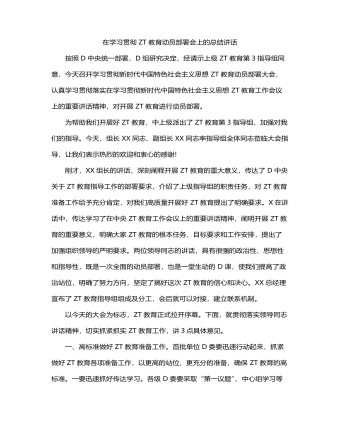
在学习贯彻主题教育动员部署会上的总结讲话
所属单位机关部门D组织ZT教育可以适当错后启动,拉开时间梯次,但也不能与上级单位间隔时间过长,最晚5月5日前要全面启动。需要强调的是,不管什么时间启动,具体到每个单位、部门,开展ZT教育的时间都不能少于5个月。无论采取哪种方式启动,都要讲清这次ZT教育的重大意义、目标要求、工作安排等。总公司机关各部门、所属各单位、各化工公司要将启动方案报巡回指导组审阅把关,巡回指导组还要现场参加指导各部门、各单位的启动工作。三、高水平进行ZT教育督促指导。强有力的督促指导是搞好ZT教育的重要保证,要把严督实导贯穿指导开展ZT教育全过程。按照D中央要求,总公司所属各单位不再派出指导组。这对总公司巡回指导组来说,担子更重了,既要直接指导所属各单位和化工公司本级D委,又要延伸指导所属单位机关部门、直属单位D组织。
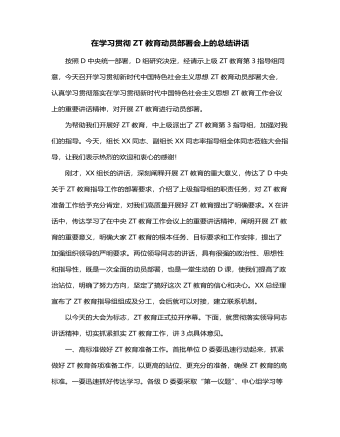
在学习贯彻主题教育动员部署会上的总结讲话
无论采取哪种方式启动,都要讲清这次ZT教育的重大意义、目标要求、工作安排等。总公司机关各部门、所属各单位、各化工公司要将启动方案报巡回指导组审阅把关,巡回指导组还要现场参加指导各部门、各单位的启动工作。三、高水平进行ZT教育督促指导。强有力的督促指导是搞好ZT教育的重要保证,要把严督实导贯穿指导开展ZT教育全过程。按照D中央要求,总公司所属各单位不再派出指导组。这对总公司巡回指导组来说,担子更重了,既要直接指导所属各单位和化工公司本级D委,又要延伸指导所属单位机关部门、直属单位D组织。要把准巡回指导工作定位,切实尊重各单位D委主体地位,紧紧依靠他们开展工作,既指出存在问题又要帮助研究对策,真正实现同题共答。
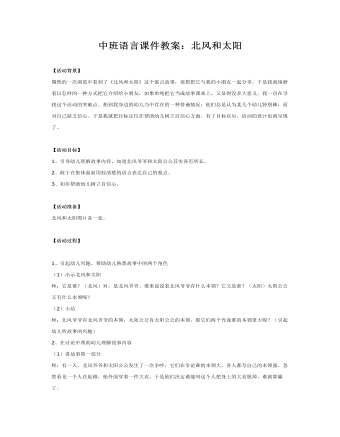
中班语言课件教案:北风和太阳
【活动目标】1、引导幼儿理解故事内容,知道北风爷爷和太阳公公其实各有所长。2、敢于在集体面前用较清楚的语言表达自己的观点。3、初步帮助幼儿树立自信心。 【活动准备】北风和太阳图片各一张。 【活动过程】 1、引起幼儿兴趣,帮助幼儿熟悉故事中的两个角色(1)出示北风和太阳师:它是谁?(北风)对,是北风爷爷。谁来说说看北风爷爷有什么本领?它又是谁?(太阳)太阳公公又有什么本领呢?(2)小结师:北风爷爷有北风爷爷的本领,太阳公公有太阳公公的本领,那它们两个究竟谁的本领更大呢?(引起幼儿听故事的兴趣)2、在讨论中帮助幼儿理解故事内容(1)讲故事第一部分师:有一天,北风爷爷和太阳公公发生了一次争吵,它们在争论谁的本领大,各人都夸自己的本领强。忽然看见一个人在赶路,他外面穿着一件大衣,于是他们决定谁能叫这个人把身上的大衣脱掉,谁就算赢了。
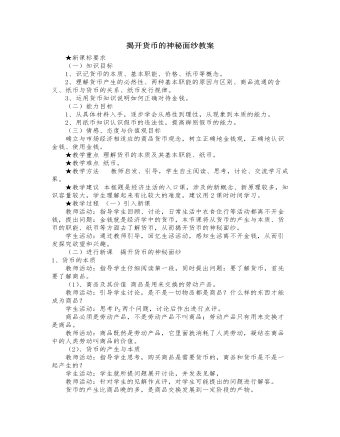
人教版高中政治必修1揭开货币的神秘面纱教案
学生活动:阅读课本,找出问题。教师点评:纸币是由国家发行的,强制使用的货币符号。因为在商品流通中,人们只关心货币能否带来价值相等的商品,不关心它本身是否足值,所以,可以用货币符号――纸币,代替它执行流通手段职能。这样就产生了纸币。教师活动:既然国家有权发行货币,是否可以随意决定纸币的发行数量呢?(2)纸币的发行规律 纸币的发行量必须以流通中所需要的货币量为限度。发行过多会引起物价上涨,;发行过少,阻碍流通。生活中出现的通货膨胀、通货紧缩现象,往往是与货币发行违反发行规律有重要关系。(3)制造假币是违法行为教师活动:请同学们阅读教材P6-7页,说明刑法中的这些规定对你有什么启示?学生活动:阅读课本,探索问题。教师引导:通过学习这些规定,应该明确:制造假币是一种违法行为,应受到法律制裁;人民币在我国经济和人民生活中有十分重要的作用,爱护人民币是每个公民的责任;要提高鉴别假币的能力。

人教版高中地理必修3第三章第一节能源资源的开发教案
山西省总结出了许多重点工矿区的生态环境建设模式,即围绕煤田的露天开采区、居民点和主要交通线建设区,通过工程及生物措施,结合土地的复垦,充分利用厂矿的人力、财力和科技优势,建立集约经营的高效蔬菜、水果及肉蛋奶生产基地(图3.13)。1.说一说图中各种工程及生物措施的作用。点拨:参考图3.13图中各工程及措施的作用:(1)隔离护坝:主要作用是将采掘区与河流隔开,以免河水流入采掘区。(2)排水沟:主要作用是引开可能进入采掘区的雨水或其他水源。(3)公路紧靠采掘区,方便运输车辆就近从工地上公路。(4)“固沙草方格”,即在流沙表面用麦草、稻草扎成1×1米的草方格,使流沙不易被风 吹起,达到阻沙、固沙的目的,并在草方格上栽种沙蒿、花棒、籽蒿、拧条等沙生植物,建立起旱生植物带,营造挡沙树林。
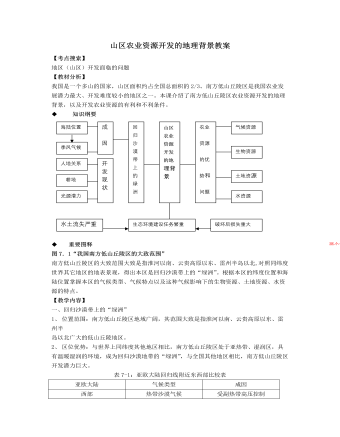
人教版高中地理选修2山区农业资源开发的地理背景教案
图7.1“我国南方低山丘陵区的大致范围”南方低山丘陵区的大致范围大致是指淮河以南、云贵高原以东、雷州半岛以北,对照同纬度世界其它地区的地表景观,得出本区是回归沙漠带上的“绿洲”。根据本区的纬度位置和海陆位置掌握本区的气候类型、气候特点以及这种气候影响下的生物资源、土地资源、水资源的特点。【教学内容】一、回归沙漠带上的“绿洲”1、 位置范围:南方低山丘陵区地域广阔,其范围大致是指淮河以南、云贵高原以东、雷州半岛以北广大的低山丘陵地区。2、 区位优势:与世界上同纬度其他地区相比,南方低山丘陵区处于亚热带、湿润区,具有温暖湿润的环境,成为回归沙漠地带的“绿洲”,与全国其他地区相比,南方低山丘陵区开发潜力巨大。

人教版高中地理选修2浦东新区的规划和开发教案
1、图12.5“浦东新区的规划图”首先了解浦东新区的位置,浦东新区位于黄浦江东部,东临东海,北濒长江,面积广阔,地形平坦,和上海市繁华的外滩和南京路只有一江之隔;其次要了解城市规划的功能分区。2、图12.6“浦东新区图”图中可见已建成陆家嘴、张江、金桥、外高桥、孙桥等功能分区,理解浦东作为现代化城市新区的格局已基本形成。3、图12.8“浦东新区的产业结构图(1997年)”读此图应该明确,浦东新区国民经济的主要支柱是工业,第二产业占62.1%,比重最小的是第一产业,仅占0.8%,为充分发挥浦东新区的龙头作用,今后该区应继续把第二产业放在首要位置,成为上海市高新技术产业和现代工业的基地。【教学内容】一、浦东新区的开发条件和作用建设城市新区是上海市发展的必然选择,建设新城区首先要选择合适的区域。

人教版高中地理选修2国土整治与区域开发教案
【考点搜索】理解中国国土整治的必要性、主要内容及其与区域可持续发展的关系。【教材分析】本课是我国国土整治与区域发展的一个开篇,目的是让学生了解国土整治的概念、意义、我国进行国土整治的必要性和迫切性、我国国土整治的重点工程、国土整治与区域发展的关系。使学生了解我国实施国土整治与区域发展的一些基本理论和原则,为以后各单元讨论典型地区的国土整治与区域发展奠定理论基础。◆重要图释1、图2.2“中国防护林体系规划示意图”防护林体系工程是中国生态工程建设的基本框架,覆盖了我国主要水土流失区、风沙危害区、盐碱区和台风区。图中深绿色区域为“三北”防护林体系建设规划区、浅绿色区域为长江中上游防护林体系建设规划区、紫色区域为沿海防护林体系建设规划区。其中“三北”防护林体系工程是世界最大的生态工程。
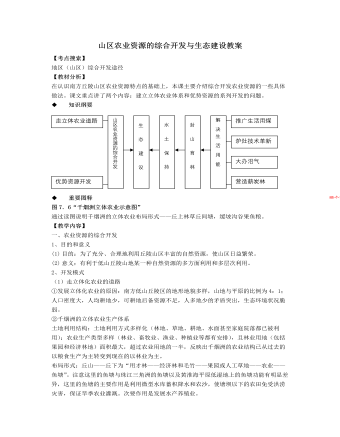
人教版高中地理选修2山区农业资源的综合开发与生态建设教案
【教学内容】一、农业资源的综合开发1、目的和意义(1) 目的:为了充分、合理地利用丘陵山区丰富的自然资源,使山区日益繁荣。(2) 意义:有利于低山丘陵山地某一种自然资源的多方面利用和多层次利用。2、开发模式(1)走立体化农业的道路①发展立体化农业的原因:南方低山丘陵区的地形地貌多样,山地与平原的比例为4:1;人口密度大,人均耕地少,可耕地后备资源不足,人多地少的矛盾突出,生态环境状况脆弱。②千烟洲的立体农业生产体系土地利用结构:土地利用方式多样化(林地、草地、耕地、水面甚至家庭院落都已被利用);农业生产类型多样(林业、畜牧业、渔业、种植业等都有安排),且林业用地(包括果园和经济林地)面积最大,超过农业用地的一半,反映出千烟洲的农业结构已从过去的以粮食生产为主转变到现在的以林业为主。布局形式:丘山——丘下为“用才林——经济林和毛竹——果园或人工草地——农业——鱼塘”。
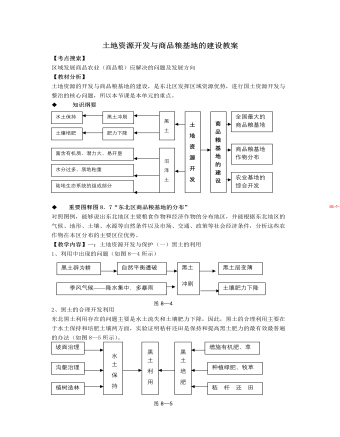
人教版高中地理选修2土地资源开发与商品粮基地的建设教案
3、东北区商品粮基地的建设松嫩平原和三江平原是我国最重要的商品粮基地,三江平原所能够提供的商品粮比重在全国最大,而且开发历史短、地广人稀、土地资源丰富、具有较大的开发潜力。4、东北区商品粮基地的综合开发东北区农业基地的综合开发,就是要在不断提高种植业本身生产潜力的基础上,大力发展养殖业和农产品加工业,使农产品多层次大幅度升值。总结:搞好商品粮基地和林业基地建设,必须从改善农业生态环境出发,坚持开发和利用、治理和保护相结合,坚持经济效益、生态效益相统一。这就要求不能通过大幅度开垦荒地、增加耕地面积来发展粮食生产,发挥现有耕地的生产潜力,提高单产是今后实现粮食增产的根本途径。【知能训练】一、选择题(第1-4题为单项选择题,第5-6题为双项选择题)1、保护和提高黑土肥力最有效的办法是 ( )A、秸秆还田B、增施化肥C、植树造林D、焚烧秸秆

小班安全教案 幼儿园小班安全教案3篇
二、展开活动: 1、引导幼儿说出做车都应注意什么样的安全问题,孩子们回答(引导说出做自行车、电动车一定要把好扶手,脚不能乱动,坐摩托车时一定要带头盔) 2、出示课件,做公交车时要注意什么?图片中的小朋友做的对吗?为什么?(图片中的小朋友把头伸到了车窗外,这样太危险了) 3、坐车还要注意什么?(不能吃东西,不能在车上乱跑) 4、继续出示课件,在车上要系好安全带,12岁以下的幼儿要坐到安全座椅上,小朋友不能坐到副驾驶的位置上,在公交车上一定要抓紧扶手,注意前门上车,后门下车。
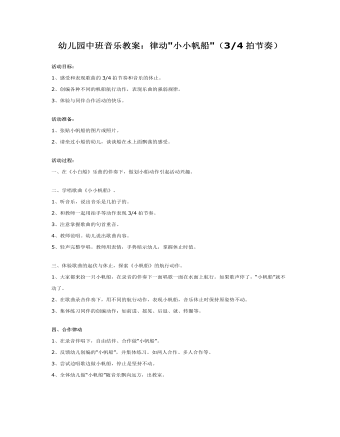
幼儿园中班音乐教案:律动小小帆船
活动准备: 1、张贴小帆船的图片或照片。 2、请坐过小船的幼儿,谈谈船在水上面飘荡的感受。活动过程: 一、在《小白船》乐曲的伴奏下,做划小船动作引起活动兴趣。二、学唱歌曲《小小帆船》。 1、听音乐,说出音乐是几拍子的。 2、和教师一起用拍手等动作表现3/4拍节奏。 3、注意掌握歌曲的句首重音。 4、教师范唱。幼儿说出歌曲内容。 5、轻声完整学唱。教师用表情,手势暗示幼儿,掌握休止时值。
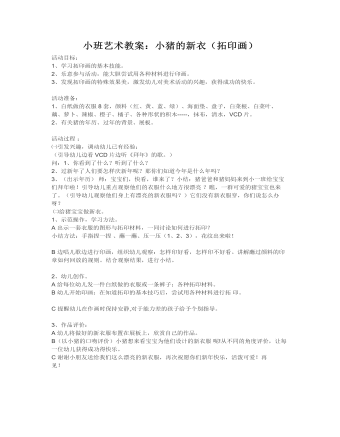
小班艺术教案:小猪的新衣(拓印画)
活动准备: 1、白纸做的衣服8套,颜料(红、黄、蓝、绿)、海面垫、盘子,白菜根、白菜叶、藕、萝卜、辣椒、橙子、橘子、各种形状的积木-----,抹布,清水,VCD片。 2、有关猪的年历、过年的背景、展板。 活动过程 : ㈠引发兴趣,调动幼儿已有经验: (引导幼儿边看VCD片边听《拜年》的歌。) 问:1、你看到了什么?听到了什么? 2、过新年了人们要怎样庆新年呢?那你们知道今年是什么年吗? 3、(出示年历) 师:宝宝们,快看,谁来了?小结:猪爸爸和猪妈妈来到小一班给宝宝们拜年啦!引导幼儿重点观察他们的衣服什么地方很漂亮 ?瞧,一群可爱的猪宝宝也来了。(引导幼儿观察他们身上有漂亮的新衣服吗?)它们没有新衣服穿,你们说怎么办呀?
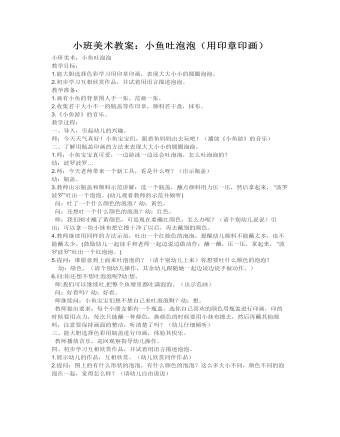
小班美术教案:小鱼吐泡泡(用印章印画)
2.初步学习互相欣赏作品,并试着用语言描述泡泡。 教学准备: 1.画有小鱼的背景图人手一张。范画一张。 2.收集若干大小不一的瓶盖等作印章,颜料若干盘,抹布。 3.《小鱼游》的音乐。 教学过程: 一、导入,引起幼儿的兴趣。 师:今天天气真好!小鱼宝宝们,跟着鱼妈妈出去玩吧!(播放《小鱼游》的音乐) 二、了解用瓶盖印画的方法来表现大大小小的圆圈泡泡。 1.师:小鱼宝宝真可爱,一边游泳一边还会吐泡泡,怎么吐泡泡的? 幼:波罗波罗… 2.师:今天老师带来一个新工具,看是什么呀?(出示瓶盖) 幼:瓶盖。
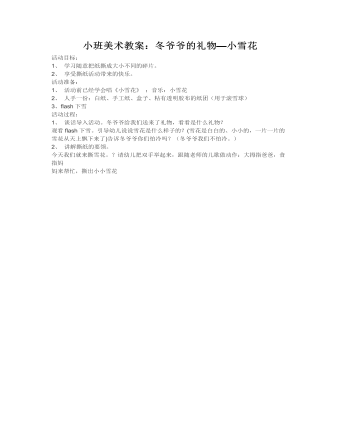
小班美术教案:冬爷爷的礼物—小雪花
2、 享受撕纸活动带来的快乐。 活动准备: 1、 活动前已经学会唱《小雪花》 ;音乐:小雪花 2、 人手一份:白纸、手工纸、盒子、粘有透明胶布的纸团(用于滚雪球) 3、flash下雪



